Hispanic Heritage Month runs from September 15 to October 15 every year. It was started in 1968 and has become a national celebration that includes arts festivals and music events from New York to Los Angeles. How did Hispanic Heritage Month start? What famous Hispanic Americans are celebrated today? And what is this year’s theme? Find out the answers to these questions and more.
Hispanic Heritage Month Facts
The commemoration of Hispanic heritage started as a weeklong event in 1968.
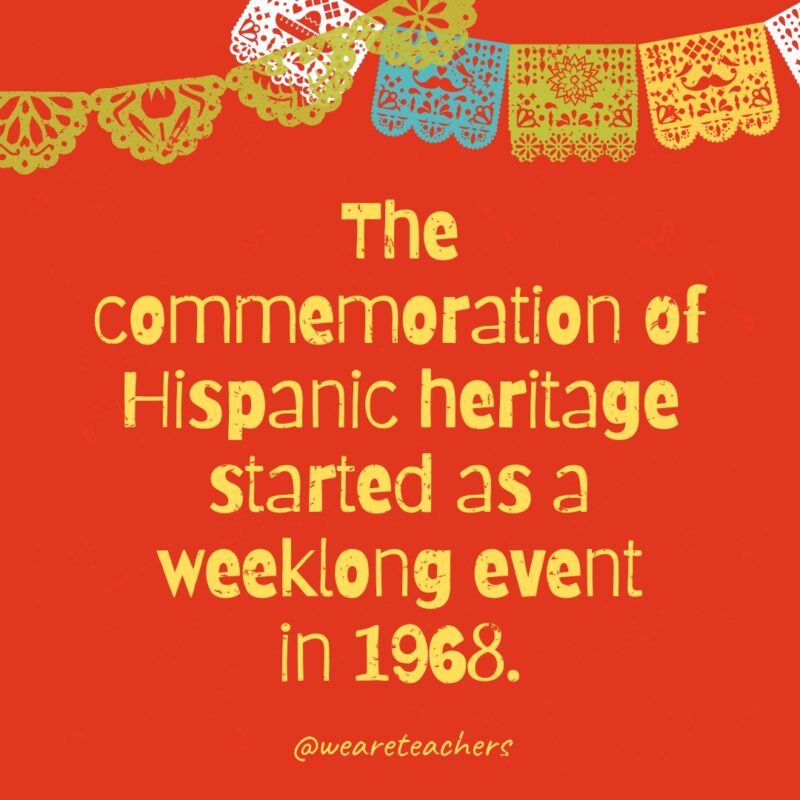
WeAreTeachers
President Lyndon B. Johnson officially created Hispanic Heritage Week on September 17, 1968. The idea, as Johnson explained it, was to honor the impact that people of Hispanic descent have had in the United States.
Teachers have been involved in Hispanic Heritage Month from the start.
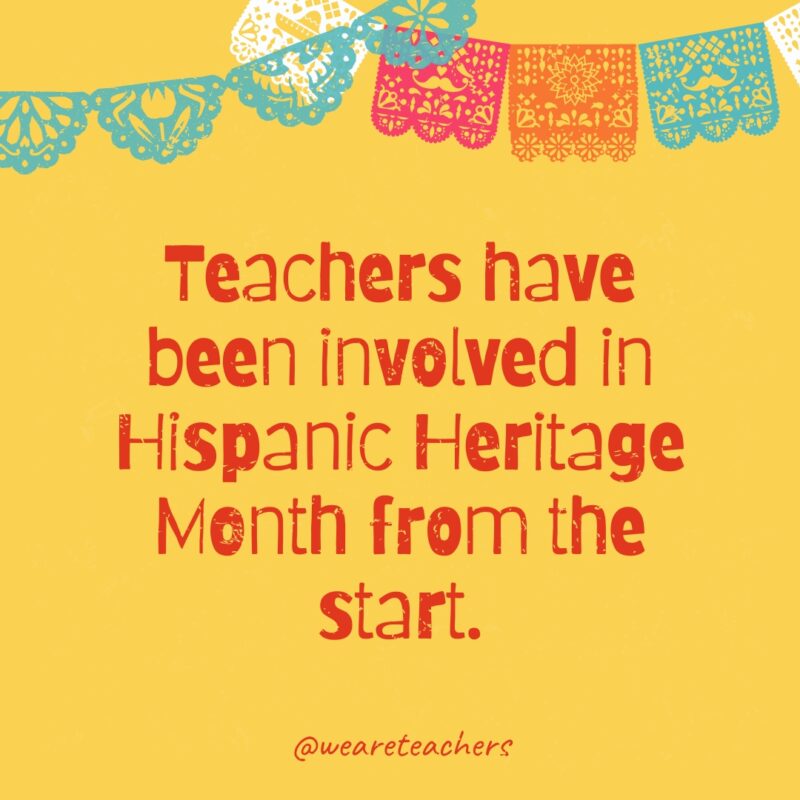
WeAreTeachers
When President Johnson created Hispanic Heritage Week, he asked teachers to create celebratory curriculum about the accomplishments of Hispanic people.
Ronald Reagan expanded Hispanic Heritage Week to a full month.
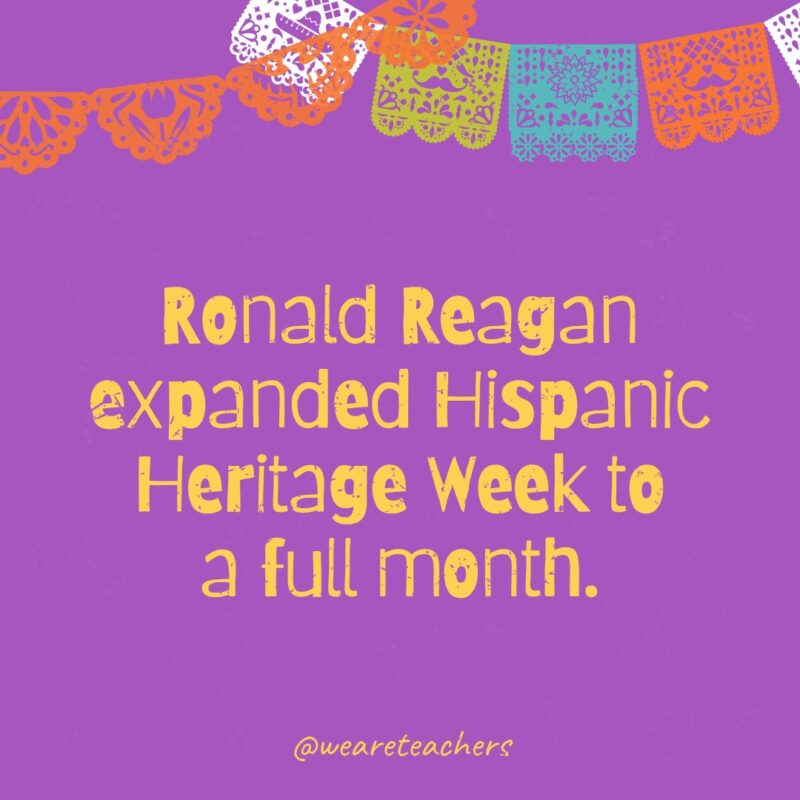
WeAreTeachers
In 1988, when President Reagan was in office, Hispanic Heritage Week was expanded from a week to a month.
Hispanic Heritage Month starts on five countries’ Independence Day.
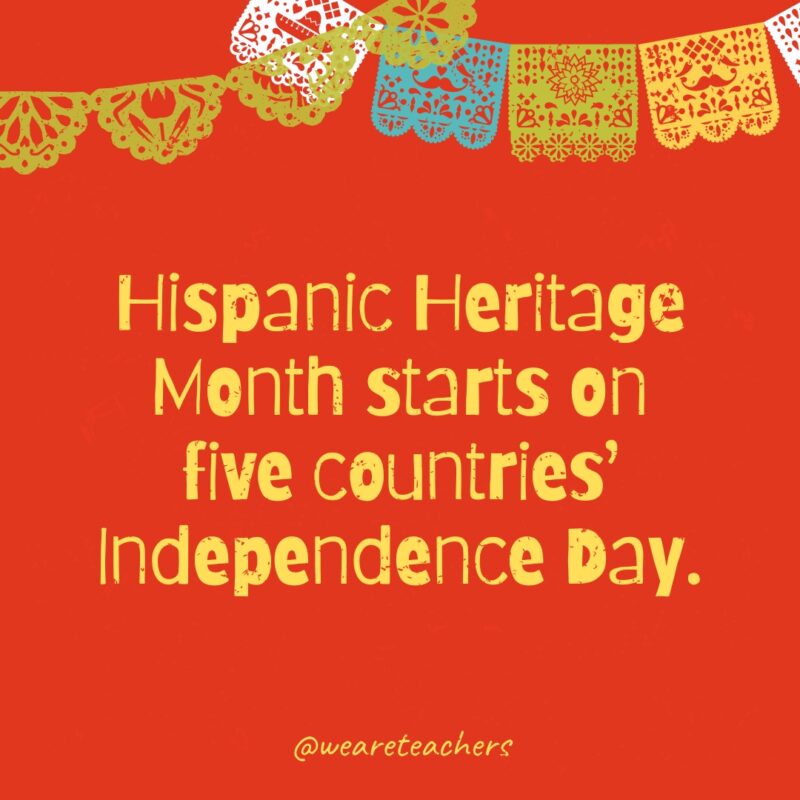
WeAreTeachers
Hispanic Heritage Month starts on September 15 each year because El Salvador, Honduras, Costa Rica, Guatemala, and Nicaragua all observe their Independence Day on that date. Mexico (September 16) and Chile (September 18) also celebrate their Independence Day during Hispanic Heritage Month.
Hispanic Heritage Month celebrates people who are from or have ancestors from countries where Spanish is spoken.
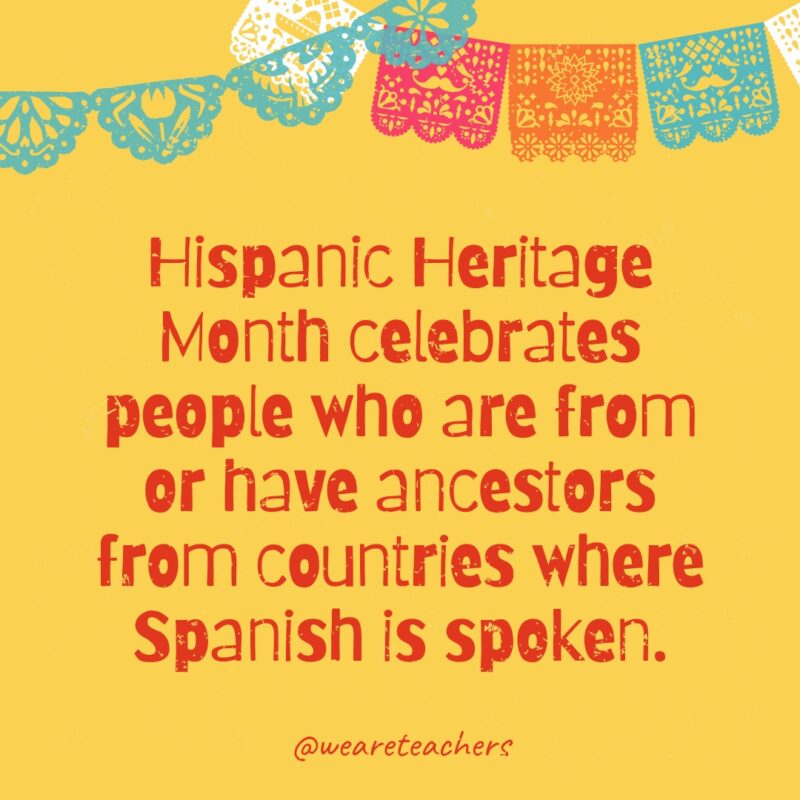
WeAreTeachers
Hispanic Heritage Month celebrates people living in the United States who have ancestors from countries where Spanish is the primary language. The term “Hispanic” was created in the 1970s after the U.S. census started.
Twenty percent of the U.S. population identifies as Hispanic.
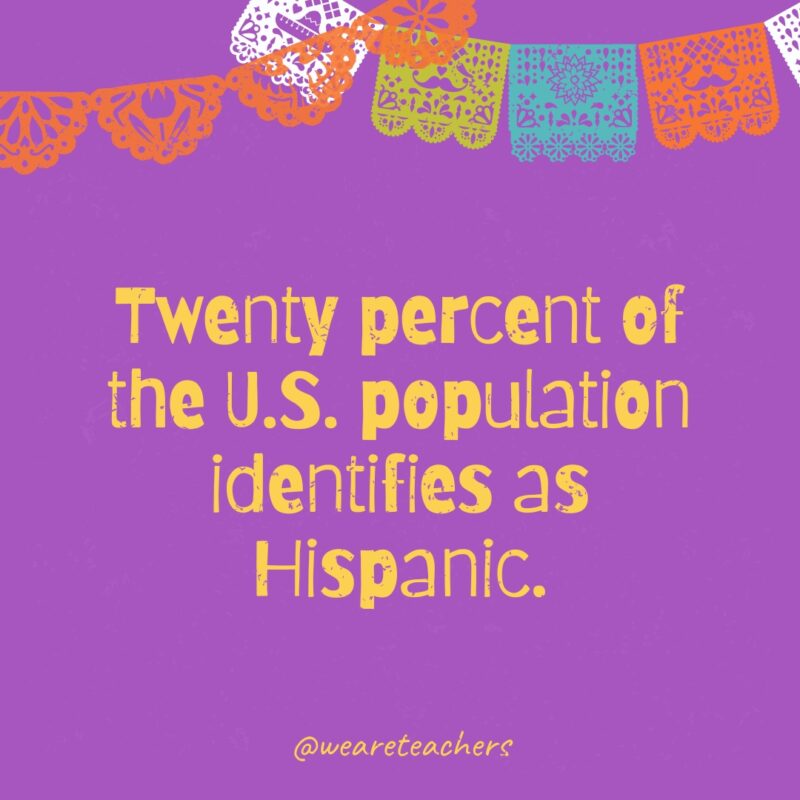
WeAreTeachers
More than 62 million people in the United States, or one in five people, identify as Hispanic.
Source: PEW Research Center
Hispanic Heritage Month always has a theme.
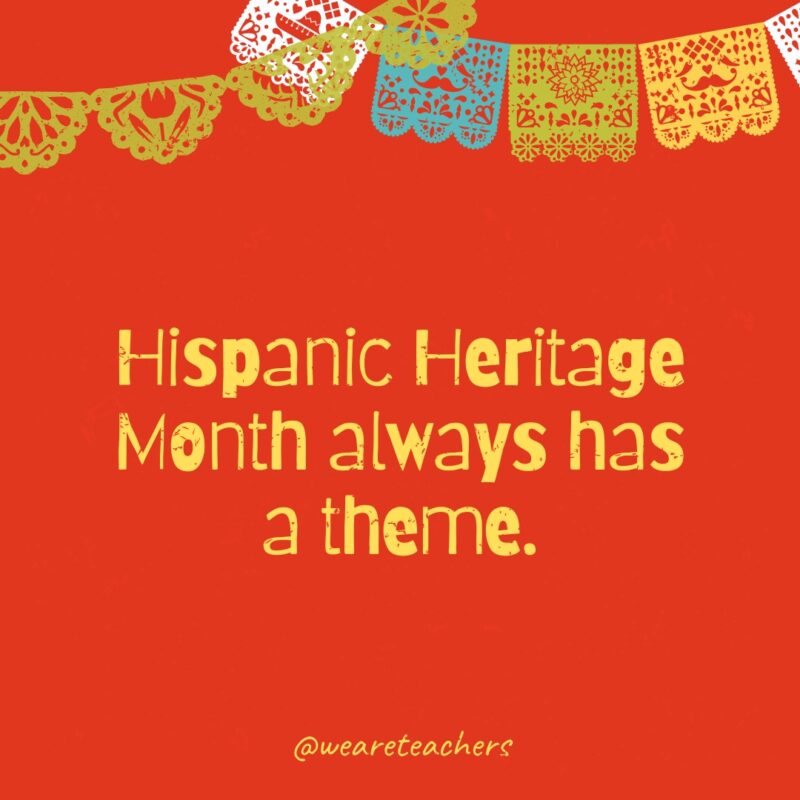
WeAreTeachers
The theme changes each year. In 2022, the theme was Unidos: Inclusivity for a Stronger Nation.
The 2023 Hispanic Heritage Month theme is Latinos: Driving Prosperity, Power, and Progress in America.
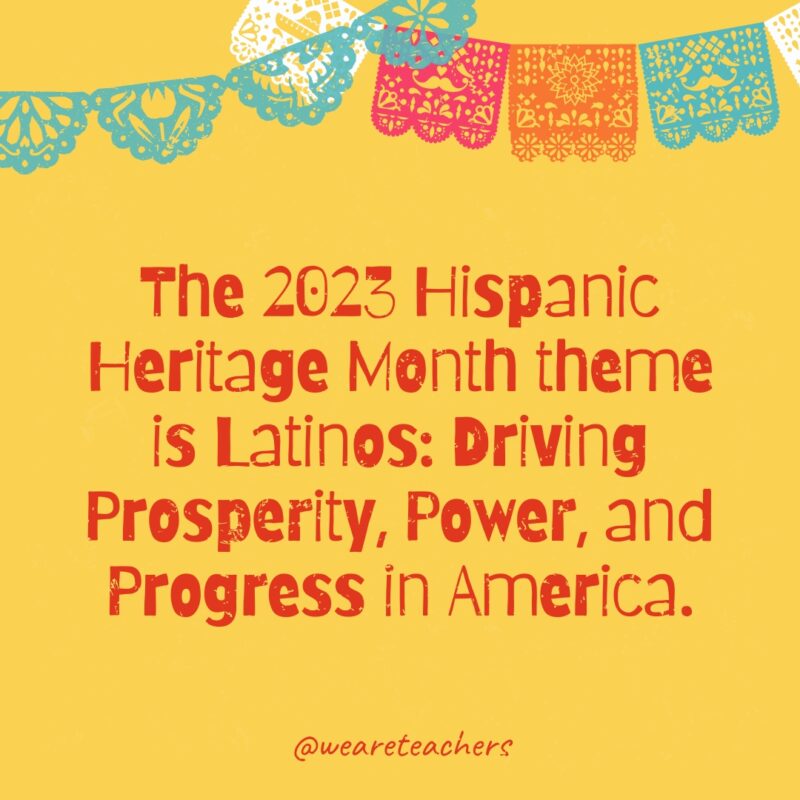
WeAreTeachers
Check out the 2023 Hispanic Heritage Month tools on LinkedIn.
There are 20 Hispanic countries and one Hispanic territory.
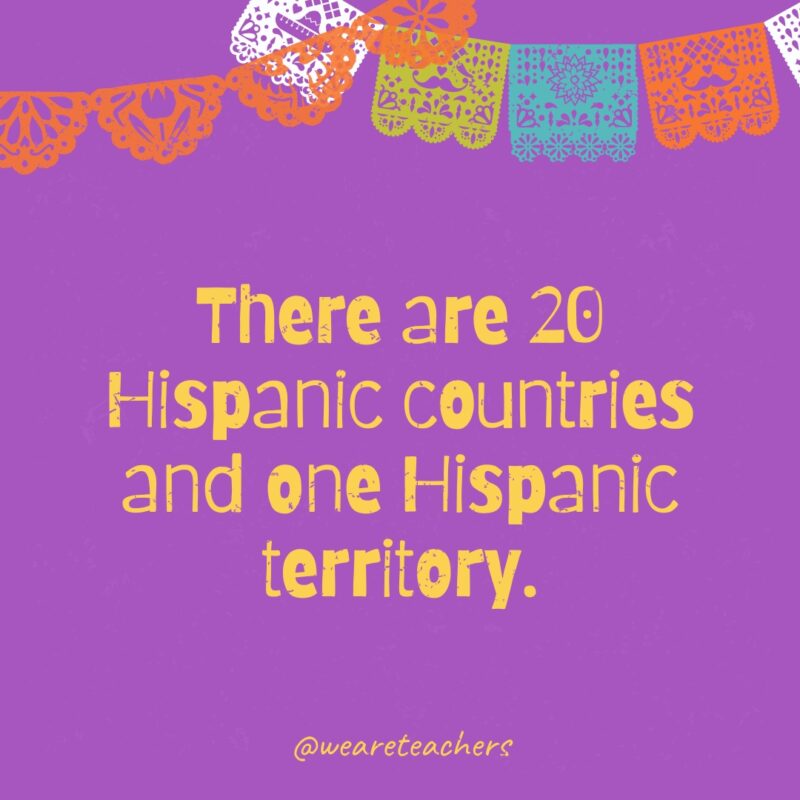
WeAreTeachers
There are 20 Hispanic countries, or countries where Spanish is the official language: Argentina, Bolivia, Chile, Colombia, Costa Rica, Cuba, Dominican Republic, Ecuador, El Salvador, Equatorial Guinea, Guatemala, Honduras, Mexico, Nicaragua, Panama, Paraguay, Peru, Spain, Uruguay, Venezuela. The one Hispanic territory is Puerto Rico.
President George H.W. Bush helped start Hispanic Heritage Week.
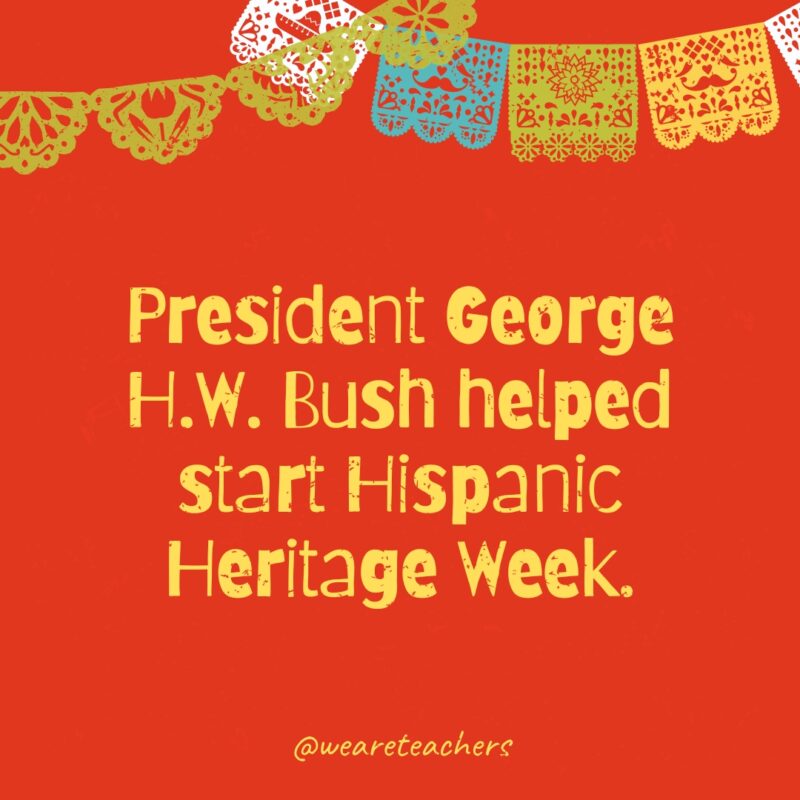
WeAreTeachers
When George H.W. Bush was in the House of Representatives in 1968, he sponsored the original Hispanic Heritage Week bill. Then, during his presidency, he declared the 30-day period from September 15 to October 15 Hispanic Heritage Month, lengthening the celebration to a full month.
In the United States, Mexican Americans make up the largest Hispanic population.
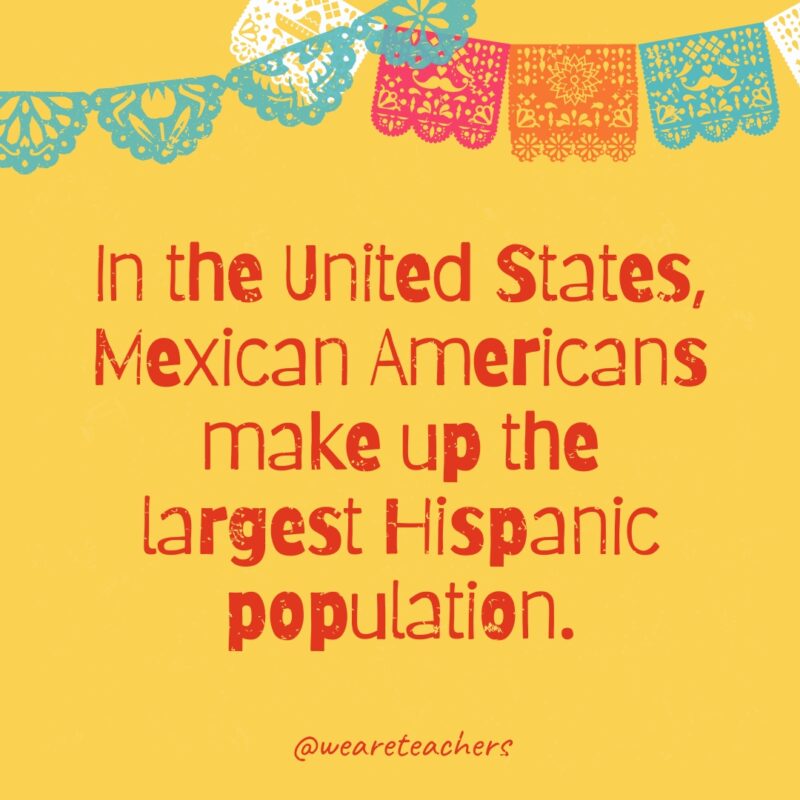
WeAreTeachers
Americans of Mexican descent are approximately 62% of the overall U.S. Hispanic population.
Source: PEW Research Center
Thirteen states have populations of at least 1 million Hispanic residents.
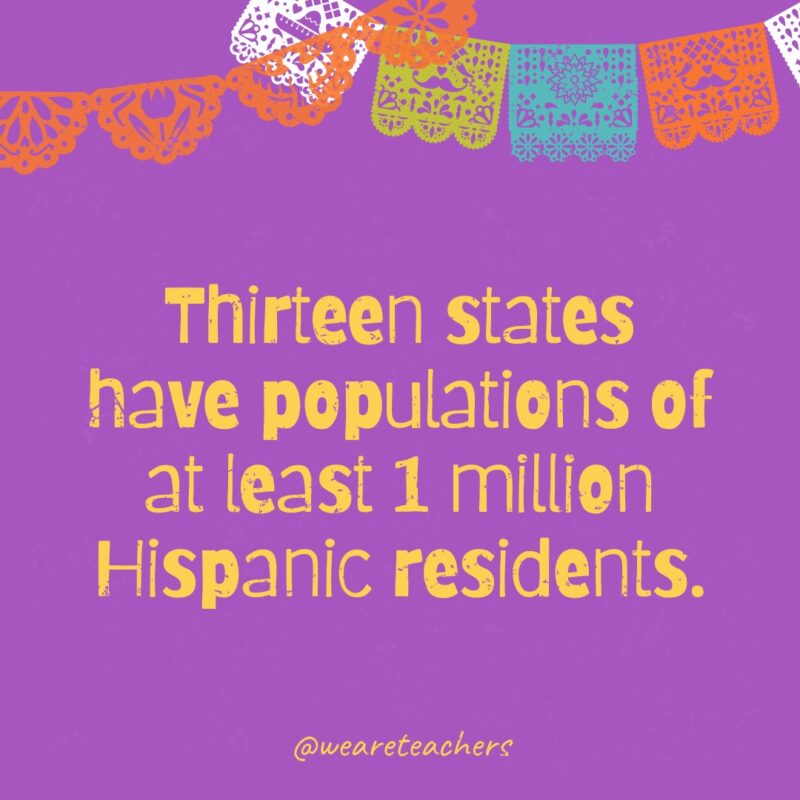
WeAreTeachers
The 13 states are: Arizona, California, Colorado, Florida, Georgia, Illinois, New Jersey, New Mexico, New York, North Carolina, Pennsylvania, Texas, and Washington.
Source: Census Bureau
Twenty-five percent of children in the United States are Hispanic.
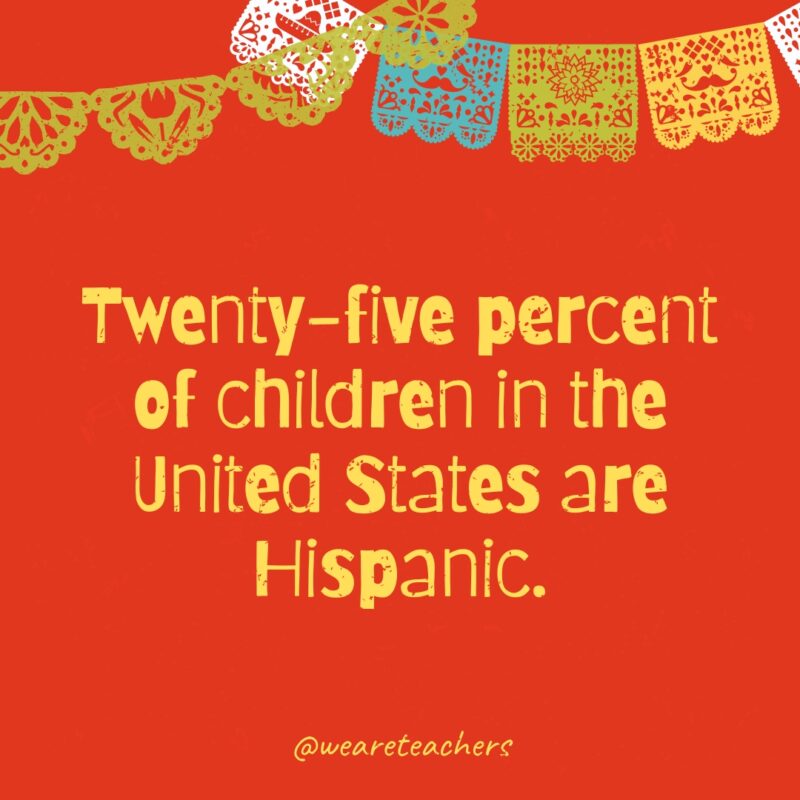
WeAreTeachers
One in four children in the United States is Hispanic, and most (94%) were born in the United States.
Source: National Research Center on Hispanic Children and Families
Starting with George H.W. Bush, every U.S. president has given a proclamation acknowledging Hispanic Heritage Month.
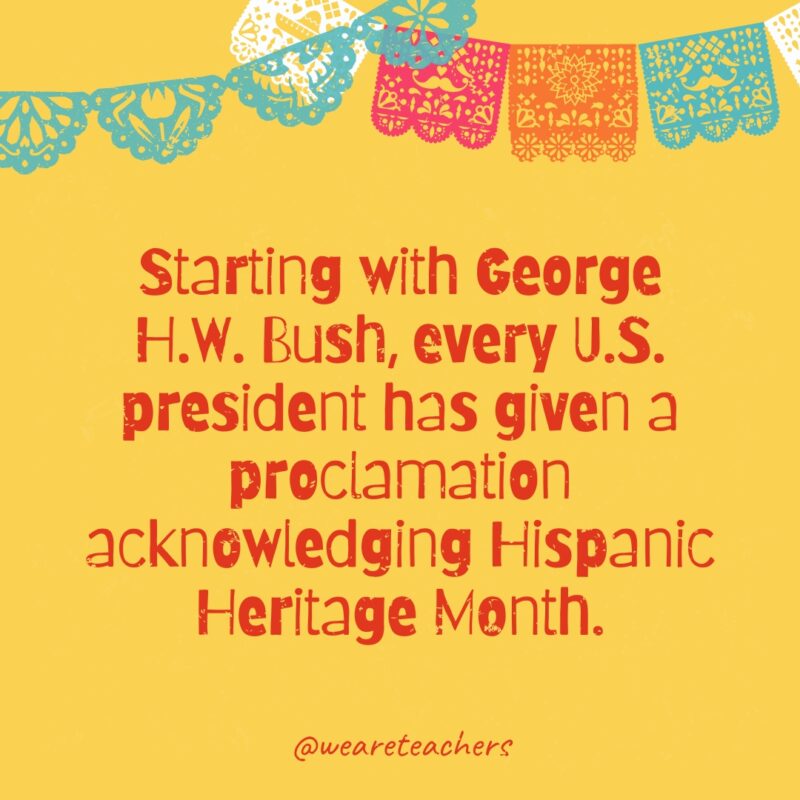
WeAreTeachers
On September 14, 1989, President George H.W. Bush was the first president to proclaim Hispanic Heritage Month. Since then, every president has given a presidential proclamation acknowledging the celebration.
Ellen Ochoa was the first Hispanic woman in space.
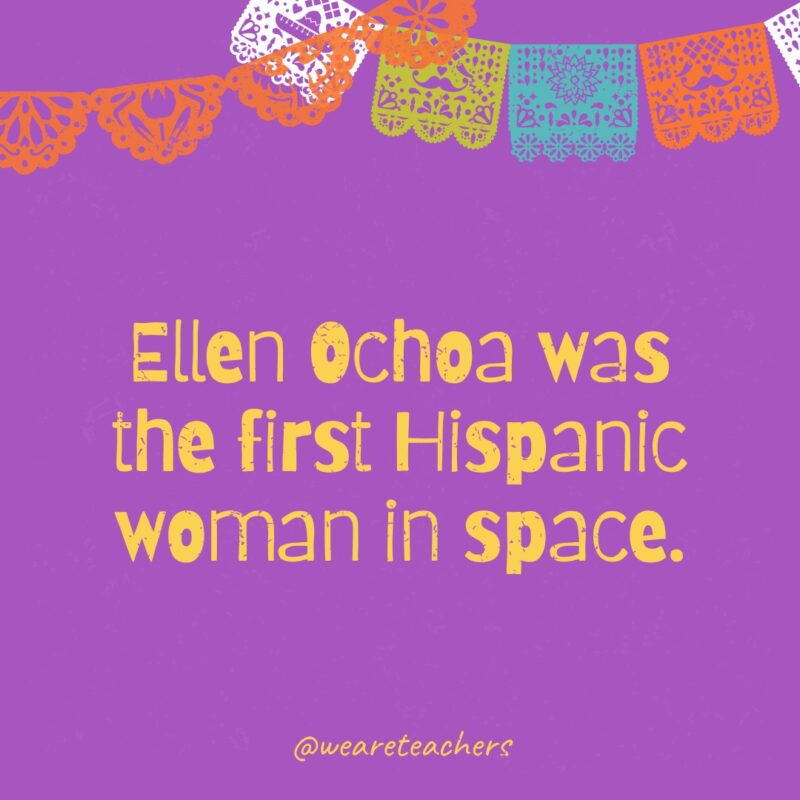
WeAreTeachers
In 1991, Ellen Ochoa became the first Latina astronaut in space. She brought her flute to play on the Space Shuttle Discovery in 1993.
After English, Spanish is the most-spoken language in the United States.
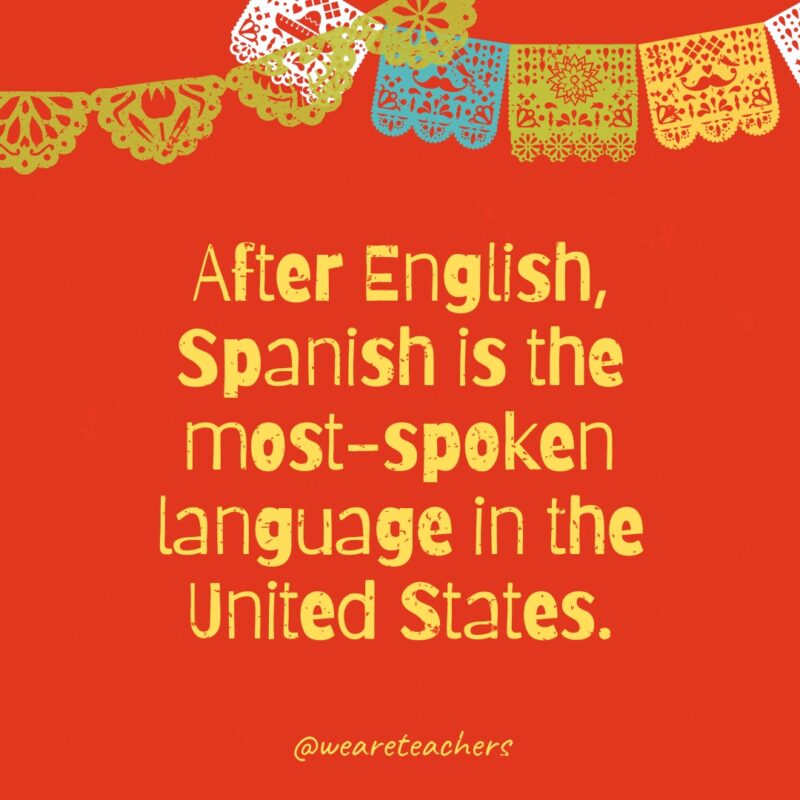
WeAreTeachers
If you include people who speak Spanish as a second language, there are more Spanish speakers in the United States than in Spain.
Sonia Sotomayor is the first Hispanic Supreme Court justice.
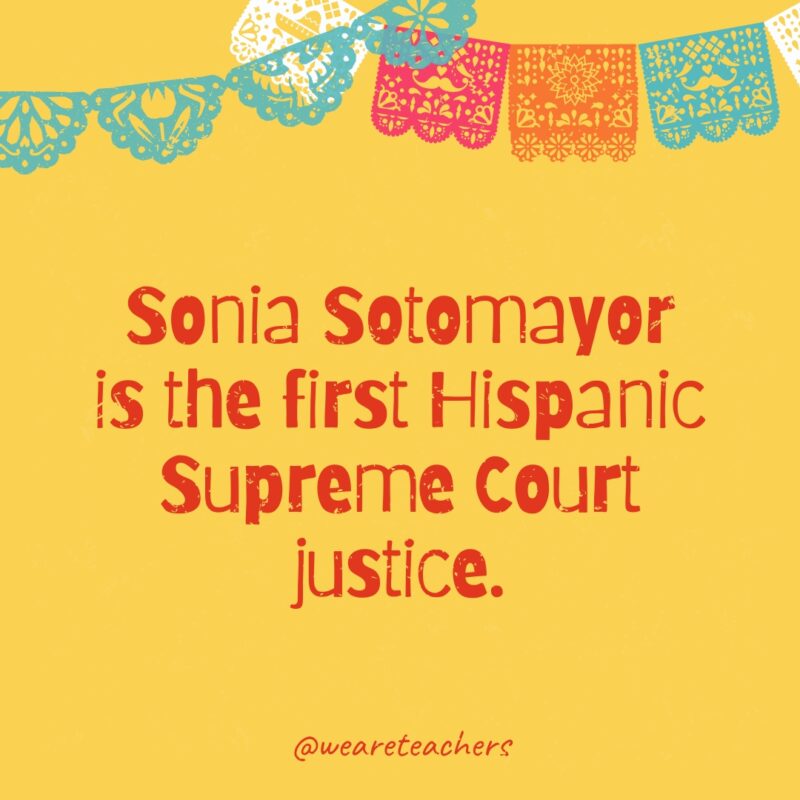
WeAreTeachers
Sonia Sotomayor, originally from the Bronx in New York, was sworn in as the first Hispanic Supreme Court justice in 2009.
Philip Bazaar was the first Hispanic American to receive a Medal of Honor.
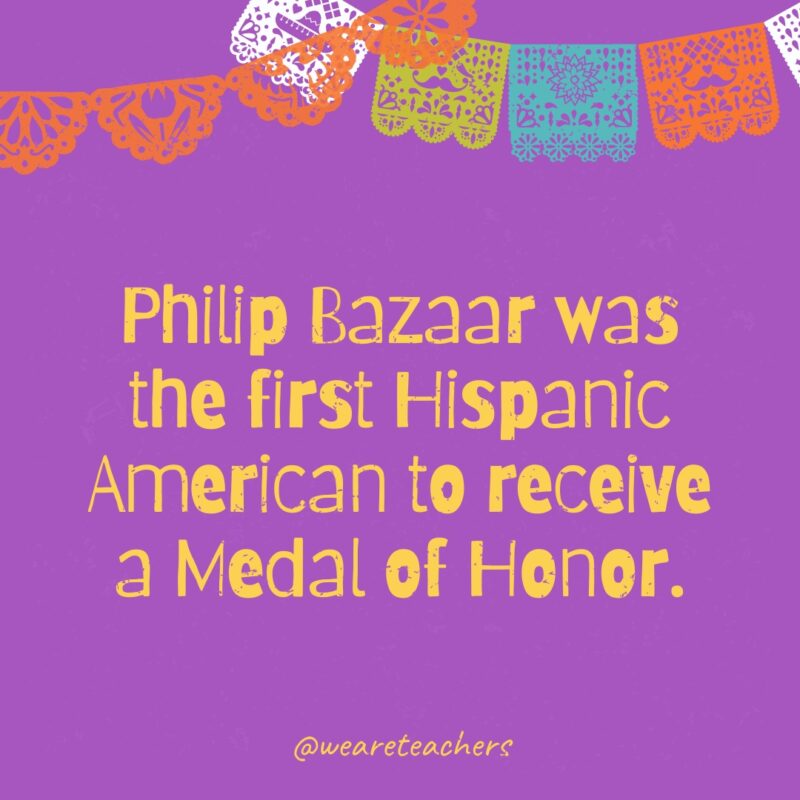
WeAreTeachers
Bazaar was from Chile and a member of the U.S. Navy during the Civil War. He earned a Medal of Honor for bravery in 1865.
Luiz Walter Alvarez was the first Hispanic American to win the Nobel Prize in physics.
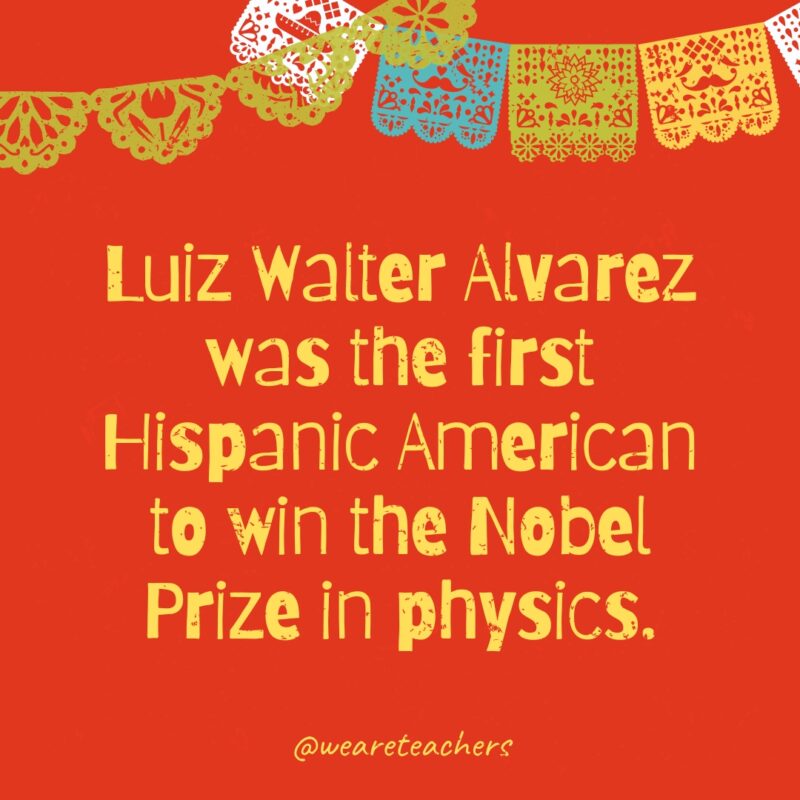
WeAreTeachers
He won the prize in 1968 for discovering subatomic particles. He and his son proposed the theory that a meteor created the mass extinction of the dinosaurs.
Spanish is just one language spoken in Hispanic countries.
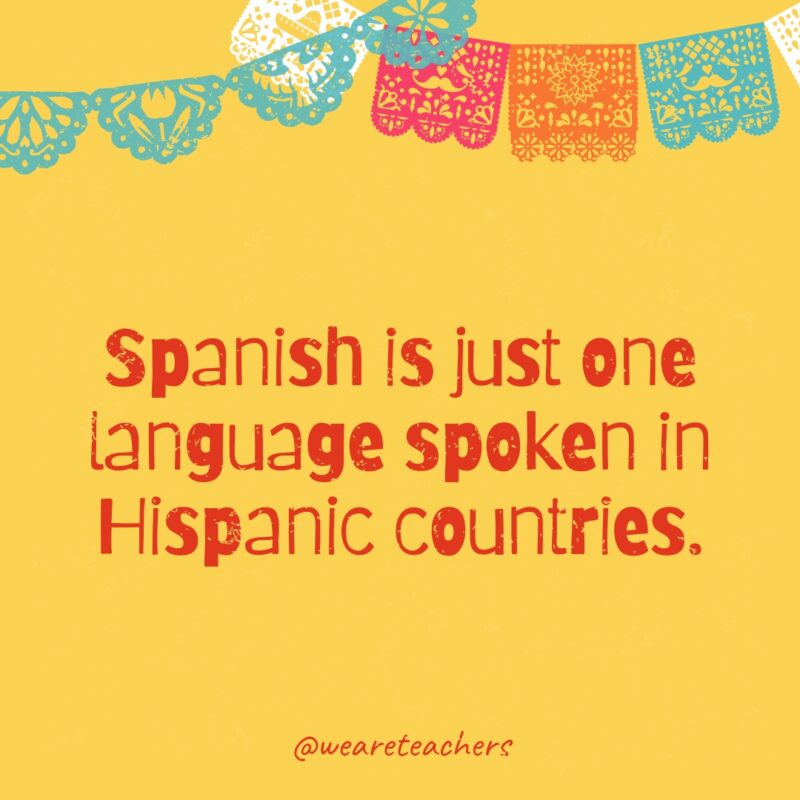
WeAreTeachers
While Spanish is the official language in Hispanic countries, there are more than 370 other languages spoken by people across Latin America.
Famous Hispanic actress Rita Moreno is one of a few people to be a PEGOT winner.
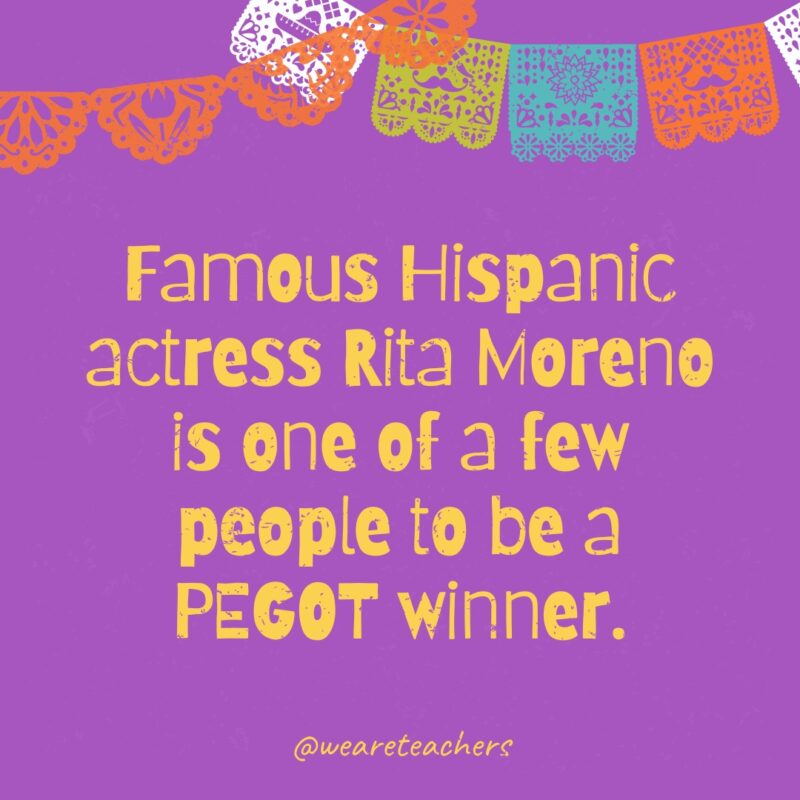
WeAreTeachers
Rita Moreno was the first Hispanic American to win an Academy Award. She has also won Peabody, Emmy, Grammy, Oscar, and Tony awards. Her Emmy award was for her performance as a host on The Muppet Show.
Sylvia Mendez attended an “all-White” school seven years before Brown vs. Board of Education.
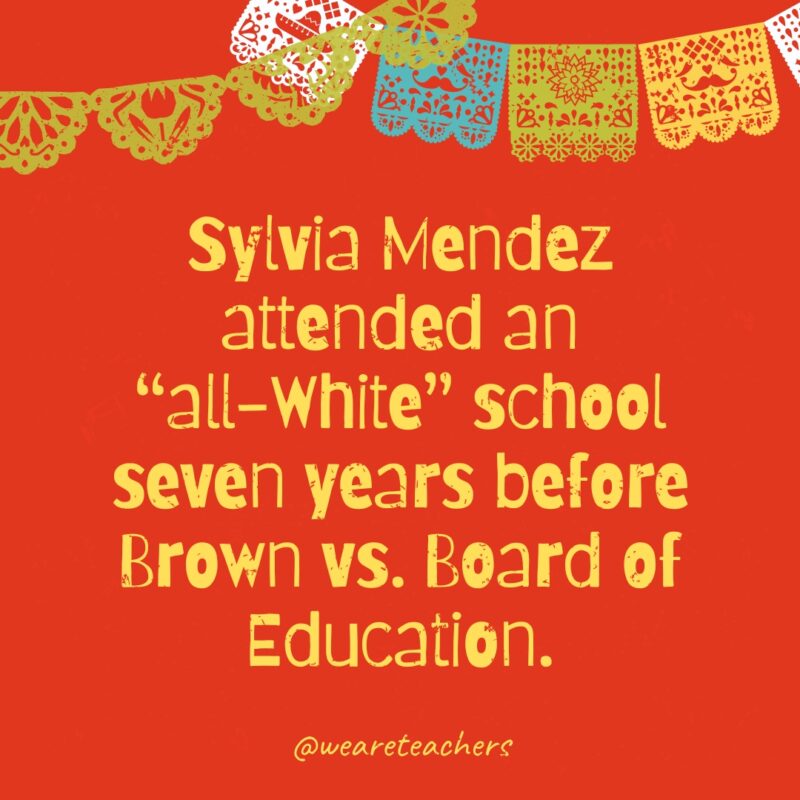
WeAreTeachers
Sylvia Mendez was growing up in California when her parents fought to register her in a school in Westminster. The school superintendent refused, saying that Mexican Americans were “intellectually, culturally, and morally inferior.” Mendez’s parents took the district to court and won. In 1946, California schools were integrated.
Dolores Huerta coined the phrase “Si se puede.”
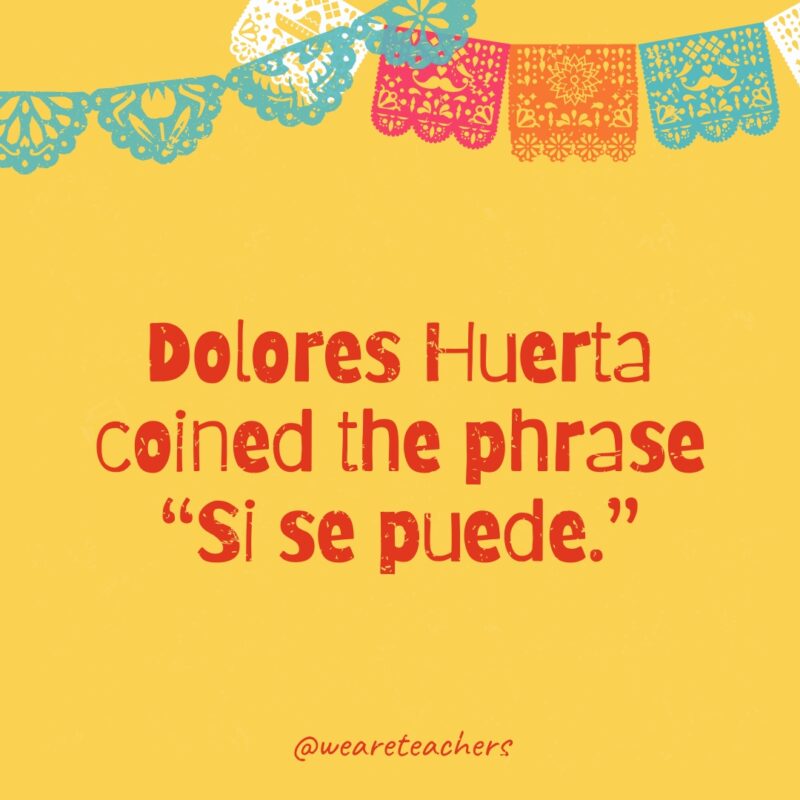
WeAreTeachers
Dolores Huerta was a labor organizer who helped found the National Farm Workers Association with Cesar Chavez. She was the one who coined the phrase, which was used in Barack Obama’s 2008 presidential campaign as “Yes, we can.”
Hispanic baseball player Roberto Clemente had more than 3,000 career hits.
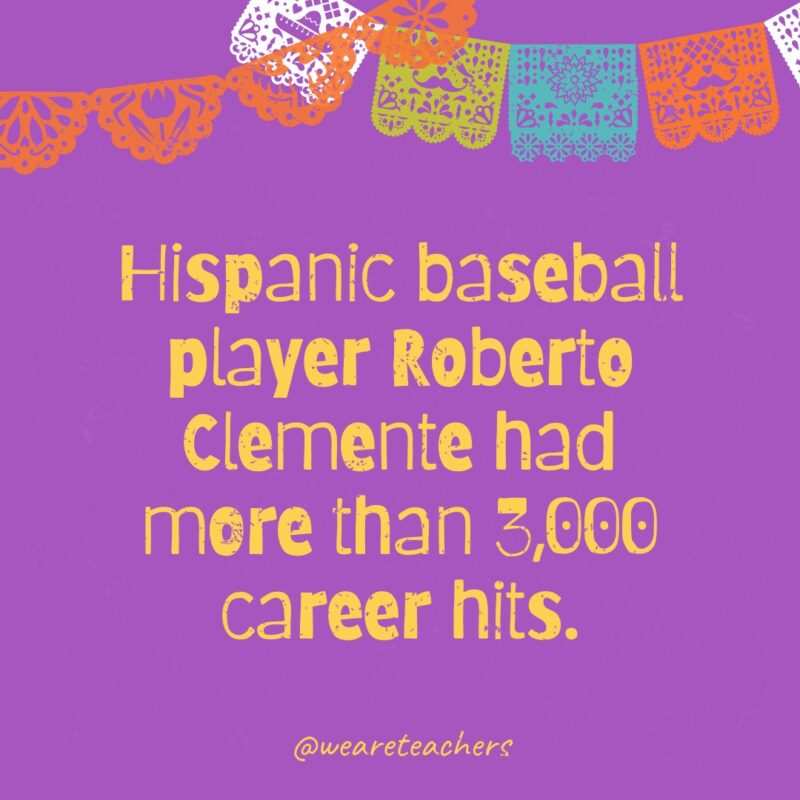
WeAreTeachers
Roberto Clemente was the first Hispanic American baseball player to win a World Series and the first Latino in the Baseball Hall of Fame. He batted 0.352 in 1970 and had more than 3,000 career hits.
Puerto Rican Alexandria Ocasio-Cortez is the youngest woman to be elected to Congress.
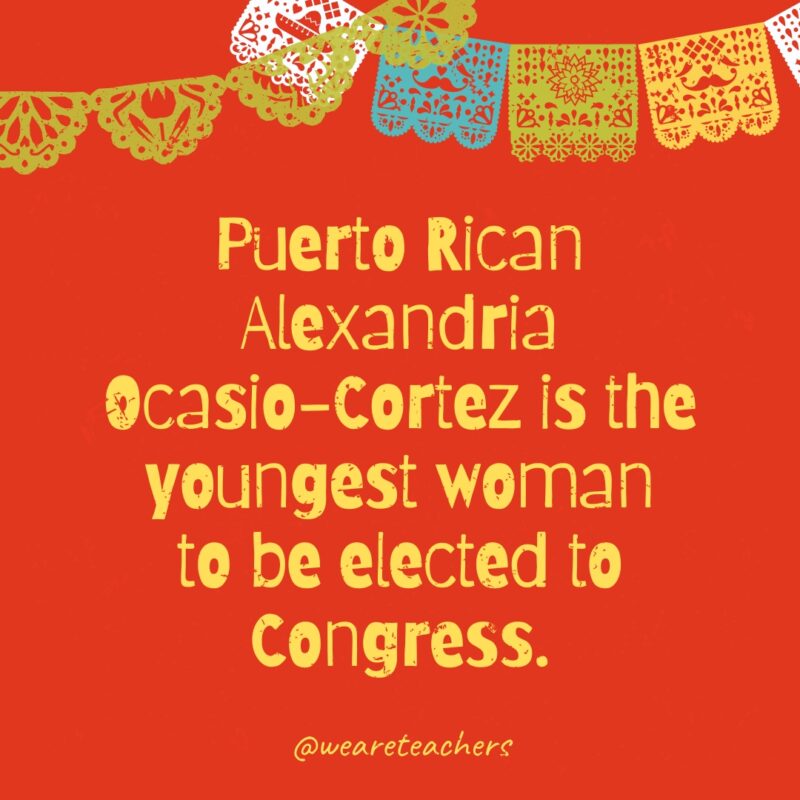
WeAreTeachers
Ocasio-Cortez was elected to the House of Representatives at age 29 to represent New York’s 14th Congressional District.
To learn more about Hispanic Heritage Month, check out When Is National Hispanic Heritage Month? (Plus Ideas To Celebrate It).
For more articles like this, sign up for our free newsletters to find out when they’re posted!

